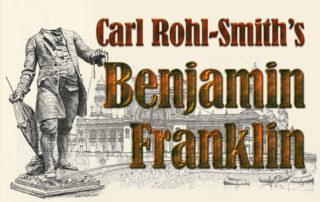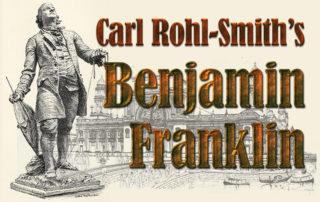
A Fair to Remember
Posts about the history of
the 1893 World’s Fair in Chicago
This Side Up: The OTHER Man Who Mailed Himself to the Midway in a Box
[Continued from Part 1 of this article.] Millions of visitors poured into Chicago during the 1893 World’s Fair. They arrived by train, boat, carriage, wagon, horseback, bicycle, and several even walked. A few others chose, well … less conventional modes of transport. For example, Herman Zeitung—the Austrian tailor, small in stature but big in bravery—mailed himself C.O.D. to the 1893 World’s Columbian Exposition. When he popped out of his [...]
This Side Up: The Man Who Mailed Himself to the Midway in a Box
Despite having nearly 120,000 people enter the fairgrounds on Friday, July 28, this was the slowest day of the week at the 1893 World’s Columbian Exposition. The day before had been a busy one, with Commercial Travelers and German Turners pouring into the Chicago fair for their "special days." Among the few events on Friday was the opening of an interesting package in the Woman’s Building. The box contained [...]
The Flying Dutchman Enlightens the World’s Fair of 1893
Visitors to the 1893 World’s Columbian Exposition in Chicago who found their way into the southwest corner of the Agricultural Building Annex encountered a most curious figure. Rising above a display of farm plows stood a twelve-foot-tall, pot-bellied man flamboyantly dressed and having a pair of huge wings. He stood on a tree stump holding a luminous ear of corn, striking a pose that lampooned the famous Liberty Enlightening [...]
“Let this gentleman in at once”: Trouble at the Gate of the 1893 World’s Fair
Horace Tucker ran a tight ship. As Superintendent of the Department of Admissions for the 1893 World’s Columbian Exposition, Tucker had to account for every person who entered the fairgrounds. In order to pass through an entrance gate, everyone needed to supply either a ticket or a complimentary pass. Everyone. A Special Pass to the 1893 World’s Columbian Exposition included the printed signature of Horace Tucker, Superintendent of [...]
The “Dream City” of 1893
“Then or now, no words can express the beauty of the Dream City, for it is beyond even the unearthly glamour of a dream.” — Candace Wheeler “The White City” is the most common moniker given to the 1893 World’s Columbian Exposition in Chicago. This nickname—referring to the uniform alabaster color of most of the main exhibition palaces—was coined by H. C. Bunner in his essay “The Making of [...]
Fabulous Fungi at the Fair
Avert your eyes from a post-apocalyptic future in which fearsome fungi destroy civilization and instead look back at some marvelous mushrooms at the 1893 World’s Fair. George Hiller with his mushroom bed in the dome gallery of the Horticultural Building at the 1893 World’s Fair. [Image from the Chicago Tribune Jan. 22, 1893.] The January 22, 1893, issue of the Chicago Tribune reported on “Mushrooms at the Exposition” [...]
Hiding the pickle at the 1893 World’s Fair
The dramatic merchandizing showcased at the 1893 World’s Columbian Exposition included a quirky subset of exhibits that might be described as “a blank made out of blank.” Much of it involved playing with food. Visitors could admire a Liberty Bell made out of citrus fruit, a Knight on horseback made out of prunes, a landscape painting made out of cereals and grasses, and a Venus de Milo statue made [...]
The Plaster Lighting Catcher of the 1893 World’s Fair: Carl Rohl-Smith’s Benjamin Franklin statue (Part 2)
[Part 1 of this article describes the commission and construction of Carl Rohl-Smith’s statue of Benjamin Franklin for the Electricity Building at the 1893 World’s Columbian Exposition.] “I begin to be almost sorry I was born so soon, since I cannot have the happiness of knowing what will be known one hundred years hence.” —Benjamin Franklin, July 27, 1783 The capital of the world vanished like a sweet dream [...]
The Plaster Lighting Catcher of the 1893 World’s Fair: Carl Rohl-Smith’s Benjamin Franklin statue (Part 1)
“The scientists says that electricity is life. Then Jackson Park is of a truth a living thing.” — H. D. Northrop, The World's Fair as Seen in One Hundred Days (1893) A crowd of fans sporting blue and red poured out of the new Franklin Field in Philadelphia on the first day of October in 1895, a warm and sunny start to the college football season. Elated with the [...]
Did the Art Institute of Chicago lions come from the 1893 World’s Fair? (Pt 2)
The pair of lion sculptures by Edward Kemeys that stand in front of the Art Institute of Chicago (AIC) are not cast from sculptures at the 1893 World’s Fair. This misinformation, which appears to have originated in the late 1980s, now permeates descriptions of these iconic Chicago mascots in institutional, popular, and scholarly sources. A set of sixteen lion sculptures stood at the entrances to the Palace of Fine Arts at the World’s Columbian Exposition (WCE), and numerous contemporary sources credit their authorship to A. Phimister Proctor and Theodore Baur (not Kemeys). More importantly, the designs of Kemeys’ AIC lions clearly do not match any of the WCE lions.










